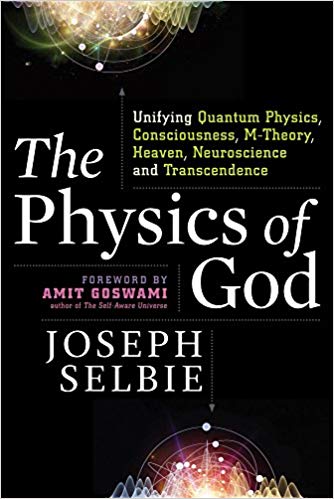The philosophy that we should merge with machines to expand our intelligence and extend life is gaining traction. Design, scientific and technological frontiers are being pushed to redefine nature through AI, AR, biotech, genetics, and VR.



ROCHESTER, Minn. — A Mayo Clinic study finds that applying artificial intelligence (AI) to a widely available, inexpensive test – the electrocardiogram (EKG) – results in a simple, affordable early indicator of asymptomatic left ventricular dysfunction, which is a precursor to heart failure. The research team found that the AI/EKG test accuracy compares favorably with other common screening tests, such as mammography for breast cancer. The findings were published in Nature Medicine.
Asymptomatic left ventricular dysfunction is characterized by the presence of a weak heart pump with a risk of overt heart failure. It affects 7 million Americans, and is associated with reduced quality of life and longevity. But asymptomatic left ventricular dysfunction is treatable when identified.


What if god was literally real. Let’s just posit that instance. What if a type 7 civilization existed. What if the realm of impossibility of dream existed. I think if a realm of impossibility existed it have literal physics. This book talks about this real instance of possible impossibility. What if water into wine literally happened it would have a literal physics. In the realm of science of the impossible there could have a literal scientific proof that a chimp with god like powers did exist that essentially maybe it prove of a being that has impossible abilities. Some even posit that god is an alien perhaps. That the universe is a sandbox for us to live much like a video game is. That the vast expansion of this bubble universe with its realm of physics that has near endless possibilities stands to reason of a creator that has made those to be. That it is not just farming we do on earth but rather something different that even in a grain of sand there is infinite possibilities because essentially it was manufactured by a god like being that physically existed. This could rewrite the history books even proving that god does exist as an actual being of immense abundance and power. M theory would solve the questions we all hold dear that the secrets of the universe may be hidden in m theory.
Setting aside the pervasive material bias of science and lifting the obscuring fog of religious sectarianism reveals a surprisingly clear unity of science and religion. The explanations of transcendent phenomena given by saints, sages, and near-death experiencers—miracles, immortality, heaven, God, and transcendent awareness—are fully congruent with scientific discoveries in the fields of relativity, quantum physics, medicine, M-theory, neuroscience, and quantum biology.

Please read 🙂.
Eat well for a long and healthy life – that’s a mantra that we’re all familiar with, but what are the best foods to help us achieve that goal? In this article, we give you an overview of some of the most healthful and nutritious foods.
Official figures indicate that, currently, the top three countries in the world with the highest life expectancy are the Principality of Monaco, Japan, and Singapore. These are places where the inhabitants experience a high quality of life, and an important element of that is eating healthful meals.
Often, we find praise for “superfoods” in the media – foods so high in nutritional value that they are seen as dietary superheroes.
David A. Sinclair, PhD, is a professor in the Department of Genetics at Harvard Medical School and co-director of the Paul F. Glenn Center for the Biological Mechanisms of Aging.
Dr. Sinclair’s work focuses on understanding the mechanisms that drive human aging and identifying ways to slow or reverse aging’s effects. In particular, he has examined the role of sirtuins in disease and aging, with special emphasis on how sirtuin activity is modulated by compounds produced by the body as well as those consumed in the diet, such as resveratrol. His work has implications for human metabolism, mitochondrial and neurological health, and cancer.
▶︎ Get the episode’s show notes, timeline, and transcript.
https://www.foundmyfitness.com/episodes/david-sinclair
▶︎ Detailed overview of NAD+
https://www.foundmyfitness.com/topics/nad
▶︎ Detailed overview of nicotinamide riboside
https://www.foundmyfitness.com/topics/nicotinamide-riboside
▶︎ Detailed topic page on nicotinamide mononucleotide
https://www.foundmyfitness.com/topics/nicotinamide-mononucleotide
▶︎ Follow Dr. David Sinclair on Twitter

The LEAF Scientific Advisory Board has grown recently with the addition of Dr. Natasha Vita-More, who may be a familiar name to many of our readers. Natasha is an extremely active public figure and science advocate and educator, and we are very pleased to welcome her to the SAB.
 Natasha is an author, humanitarian, and innovator whose work focuses on longevity and regenerative generations. As a motivational speaker, she focuses on causes and solutions while fostering meaningful acknowledgement of the works of other people who have aspired to identify human potential. She is called “An early adopter of revolutionary changes” (Wired, 2000) and “Advocates the ethical use of technology to expand human capacities” (Politico, 2017).
Natasha is an author, humanitarian, and innovator whose work focuses on longevity and regenerative generations. As a motivational speaker, she focuses on causes and solutions while fostering meaningful acknowledgement of the works of other people who have aspired to identify human potential. She is called “An early adopter of revolutionary changes” (Wired, 2000) and “Advocates the ethical use of technology to expand human capacities” (Politico, 2017).
Natasha was the Lead Scientific Researcher on the Memory Project, which has created scientific breakthroughs involving the long-term memory of C.elegans in cryonics (2015). As a proponent for mitigating aging, Natasha introduced the seminal field of Human Enhancement for longevity in academics.

From Cryonics To Living In Android Bodies here are 10 Ways Humans Will Become Immortal by 2050.
#Technology #Science #Immortal
Today we’re going to talk to the godfather of longevity, Aubrey de Grey, in the most ironic of settings – a pub in London. Over a beer, Aubrey explains why he believes that many of the typical health practices, such as drinking a lot of water, are myths and what he has discovered about slowing down the aging process. He reckons that in as little as 17 years, aging will no longer be a concern, and he supports this radical standpoint with some fascinating research. He talks about the idea that health is an integral part of longevity and that the seven pillars of aging need to be addressed simultaneously.